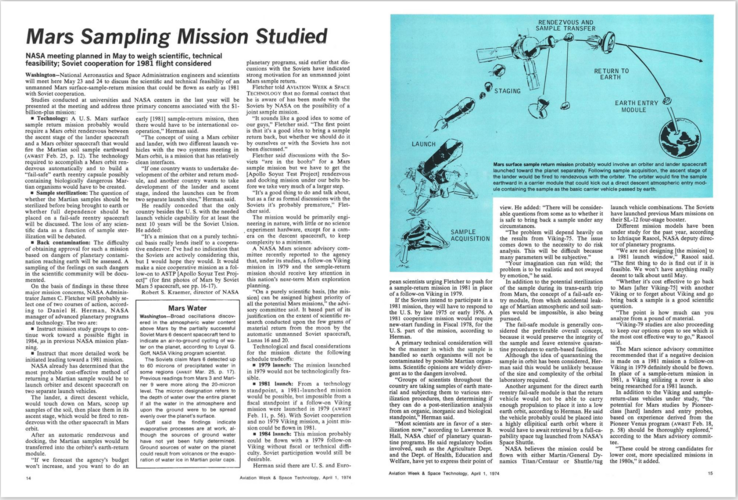WHAT WE FOUND
The MSR Program is facing significant obstacles completing its Formulation Phase—establishing a stable design with realistic cost and schedule estimates—in a timely and effective manner. As the Program prepares to recommend a life-cycle cost and schedule baseline at KDP-C, those obstacles include schedule and design/architecture issues with the CCRS. The CCRS’s Preliminary Design Review—which demonstrates the design is complete and meets all system requirements—was scheduled for October 2022 but was not completed until December 2023. To simplify the CCRS’s design, changes were made to its sample container sterilization system; however, the new system’s effectiveness must be studied, and the technology matured, before it can be used in space.
These schedule and design issues, adding about $200 million to the budget and resulting in one year of lost schedule, can be attributed in part to inadequate guidance during the Pre-Formulation Phase, a problem experienced by several NASA large flagship missions. NASA completed a Large Mission Study in October 2020 that noted while large missions require greater priority, resources, and attention during pre-formulation when key architecture decisions are made, little guidance exists to guide activities during this period. NASA has yet to incorporate the study’s results into its practices for these missions. Considering the CCRS’s schedule and design issues, the MSR Program is at least 7 months behind schedule in completing its Formulation Phase as its KDP-C, originally scheduled for August 2023, will not occur until at least March 2024.
The trajectory of the MSR Program’s life-cycle cost estimate, which has grown from $2.5 to $3 billion in July 2020, to $6.2 billion at KDP-B in September 2022, to an unofficial estimate of $7.4 billion as of June 2023 raises questions about the affordability of the Program. Characteristics intrinsic to big and complex missions like the MSR Program are hard to quantify in estimates but can drive project costs upwards throughout development. These include fully understanding the mission’s complexity, initial over-optimism, a less than optimal design/architecture, and the team’s ability to perform to expectations. When developing its cost and schedule estimate for KDP-C, and as the MSR Program addresses its architecture issues, Program management must consider these intrinsic characteristics and not attribute past cost growth to just the COVID-19 pandemic, inflation, or supply chain issues.
Additionally, MSR Program formulation is impacted by coordination challenges between NASA and ESA. While communication processes are formally documented and being followed, NASA and ESA are experiencing issues related to schedule transparency, asynchronous design progress, and mass allocation, which appear to stem from differing operational approaches, acquisition strategies, and agency funding mechanisms. The CCRS project team noted that significant progress has been made addressing interface issues between the two entities.
The MSR Program recently acknowledged it likely cannot meet the life-cycle cost estimate and launch dates established at KDP-B. A September 2023 report by an Independent Review Board recommended the Program consider modifications to specific mission designs. Accordingly, it is critical that before the MSR Program is approved to proceed from formulation into development, viable alternatives to the Program’s mission architecture are considered—including mission launch and sample return alternatives—as well as the value of the samples returned, the Program’s schedule, life-cycle cost estimate, and the Agency’s historic leadership position in space exploration.

 arstechnica.com
arstechnica.com

















